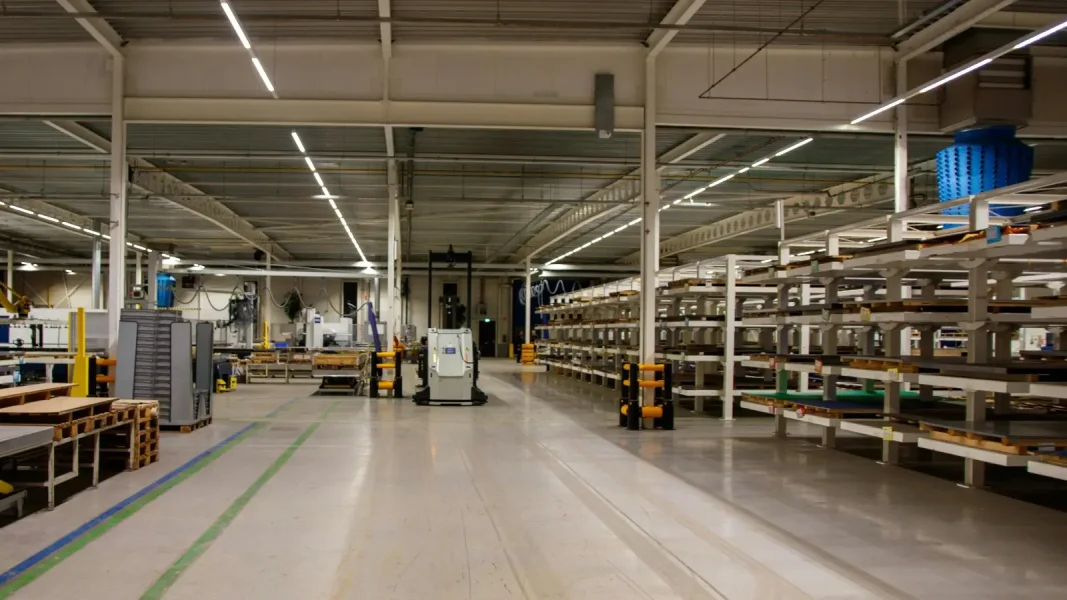How to optimize inventory and procurement through integrated supply chain management?
L’optimizing inventory allocation and stock levels is a cornerstone of logistics in the retail sector.
How do you maximize product availability while optimizing the balance between lost sales, breakage, inventory immobilization costs, logistics costs, etc.?
The integrated (or unified) supply chain addresses these two issues. integrated (or unified).
Would you like to streamline your inventory and supply management processes by synchronizing warehouse and depot data? or a better flow of information within the supply chain?
Are you looking for the right balance to avoid stock-outs, while at the same time limiting the costs associated with excess inventory?
In this article, find out how a unified supply chain is the key to meeting these logistics challenges.
Definition & Background :
What is a unified supply chain?
What is a unified supply chain?
The unified supply chain is a strategy that involves integrating all elements of the supply chain into a single process.
Supply chain integration is based on the idea that all links in the chain are interdependent, and must therefore be synchronized to optimize inventory management and procurement.
In concrete terms, the unified supply chain is based on centralizing data flows in a single solution, and eliminating silos between the different levels of the chain.
Store and warehouse data are synchronized. They can be cross-referenced with other data, such as factors influencing demand:
- Meteorological data,
- Point-of-sale promotions,
- Seasonality,
- Sales history,
- External events, …
Depending on the solution you adopt, you can then use this data to refine your forecasts, projections and order suggestions.
For example, the Optimix solution enables you to make refined forecasts of inventory and supply requirements based on various parameters.
What challenges does the integrated supply chain address?
The unified supply chain synchronizes the links in the logistics chain to adjust stock and supply forecasts at all levels.
In practice, it is often the case that retailers operate with two separate forecasting engines, one for stores and one for warehouses.
However, if these two engines are out of sync, warehouse forecasts are out of sync with in-store demand.
They are based exclusively on the history of deposit shipments in previous periods. The depot forecasting engine takes no account of consumer demand, nor of store-level operations (promotions, facing changes, etc.).
Failure to take this into account reduces forecast accuracy. In practice, this means the risk of shortages or overstocking. They have an impact on customer satisfaction and loyalty, and/or on profitability if we consider the costs associated with excess stock.
Would you like to increase the accuracy of your forecasts?
The unified supply chain generates an average 15-point increase in Forecast Accuracy.
With integrated logistics, you start with sales forecasts at distribution channel level and work your way up the chain to calculate depot requirements. For example, if a retailer has organized its warehouses in a cascade, the starting point is consumer demand in store. We forecast the needs of regional depots to anticipate those of national depots.
Warehouse forecasts are therefore always in line with in-store demand. You get a highly granular level of precision, as you adjust forecasts by product, store and/or channel. This precision is passed on throughout the supply chain.
The benefits of a unified supply chain
Correcting sales histories
The first benefit of a unified supply chain is the integration of the data that influences sales. Data synchronization will facilitate forecasting, inventory and supply projections.
To make forecasts and projections more reliable, it is necessary to correct historical data for the impact of out-of-stock situations, lengthy shortages, promotions, abnormal sales and other events. What impact do the various influencing factors have on your sales? What would your sales levels have been without out-of-stock situations or promotions, for example?
This enables you to calculate your forecasts, procurement and inventory management plans on the basis of corrected sales, and to analyze differences between corrected and observed sales.
A version of the forecast shared by all links in the supply chain
The unified supply chain promotes information sharing between all players in the supply chain.
Store managers, depot managers, local and regional levels and head office now all have the same level of information to make the right decisions in terms of inventory and supply management.
All forecasts are based on the same information flow, taken directly from store forecasts. Communication between the links in the logistics chain is greatly enhanced.
Everyone has access to a granular view of needs by product and by store. Internal exchanges are therefore made on a common basis to support decision-making. The same applies to the external ecosystem. Companies can rely on highly accurate forecasts to communicate with their suppliers on supply plans.
Safety stocks and supplies based on consumer demand
The safety stock (or buffer stock) refers to the additional stock held by companies to cope with an unanticipated increase in demand. Buffer stock volume is a key issue in logistics, as immobilizing stock has a cost.
Too much stock means higher variable and fixed costs. Excess stock means additional space has to be mobilized. It increases holding and maintenance costs. What’s more, too much stock can lead to lost time, inefficiency and increased risk of error in the warehouse. Overstocking can also result in unsold goods or sales at a loss.
The unified supply chain facilitates safety stock forecasting since it is directly linked to in-store consumer demand, rather than an extrapolation of previously observed depot outflows.
In the same way, retailers can adjust supplies to match demand at the point of sale, to avoid out-of-stock situations and overstocking.
Significant time and efficiency savings for teams
If your inventory management is based on silos, forecasting is much more tedious and time-consuming. On the one hand, store teams have to calculate and validate a forecast, and on the other, depot teams also have to make their own forecast based on historical data.
As a result, the operation takes twice as long to produce forecasts that are not even correlated.
By opting for a unified supply chain, warehouse forecasts are derived from store forecasts, which in turn are derived from consumer demand. You can automate forecasts based on actual data and integrate the influencing factors that impact demand.
The time saved is considerable. It also means greater efficiency, as you reduce the margin of error in your forecasts and make better, more accurate and more profitable decisions for your organization.
The integrated supply chain: a forecast automatically adjusted to in-store operations
In a silo-based approach, depot forecasting is based solely on depot data. She is “blind” to everything that happens at the point of sale.
With the integrated supply chain, you can easily integrate in-store operations into your warehouse forecasts and thus significantly reduce your warehouse inventory levels. Blind forecasting of final demand can only lead to safety stock inflation.
You can rely on the projections. For example, you put a product at the top of your shelves, you change your facings or you run a promotional operation. All these actions have an impact on your projections. With a silo supply system, they fly under the radar. But if you synchronize the warehouse forecast with the depot forecast, inventory requirements are automatically passed on to the depots.
Inventory and supply management are key profitability drivers for retailers.
The unified supply chain relies on consumer demand to establish store and warehouse forecasts. It enables you to automate your inventory forecasts, saving time and improving efficiency. It also offers a panoramic view of all the influencing factors that impact your inventory management.
By adjusting your safety stocks as closely as possible to consumer demand, you can achieve substantial savings while avoiding stock-outs. But to avoid shortages and overstocking, you need a highly granular view of in-store demand.
The supply chain solution developed by Optimix is based on the principles of unified supply chain to synchronize data and refine store and warehouse forecasts.
Do you want to reduce out-of-stocks by up to 75%, or cut your inventory by up to 30%? Let’s talk about it.





